PerloveJUDAIC 317 / HISTART 393 / HISTORY 399 / RCCORE 334: The Nazis and Art - Pormoting, Demeaning, Plundering
Winter 2017Fall 2014
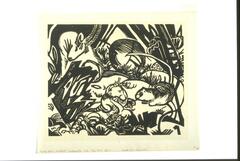
Franz Marc
Tierlegende
woodcut on paper
7 3/4 in x 9 7/16 in (19.68 cm x 23.97 cm);7 3/4 in x 9 7/16 in (19.68 cm x 23.97 cm);19 1/4 in x 14 1/4 in (48.89 cm x 36.2 cm)
Gift of Jean Paul Slusser
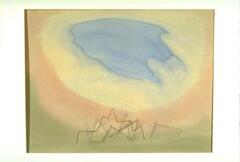
Paul Klee
Blitzgefahr
watercolor on paper
18 in x 20 1/8 in (45.7 cm x 51.1 cm);22 3/16 in x 28 3/16 in (56.36 cm x 71.6 cm);18 1/8 in x 20 1/8 in (46.1 cm x 51.1 cm)
Gift of Henry Tracy Kneeland of Bloomfield, Connecticut, in memory of his parents, Frank G. Kneeland and Helen Dodge Kneeland
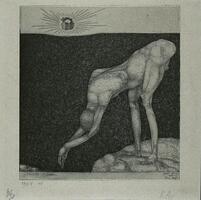
Paul Klee
Monarchist
etching on paper
6 ¼ in x 6 ¼ in (15.88 cm x 15.88 cm);16 ½ in x 12 ⅝ in (41.91 cm x 32.07 cm);19 3/10 in x 14 ⅜ in (49.05 cm x 36.51 cm)
Museum Purchase
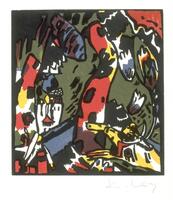
Wassily Kandinsky
The Archer
woodblock on paper
6 1/2 in x 6 in (16.5 cm x 15.2 cm);12 3/16 in x 9 1/2 in (30.9 cm x 24.1 cm);19 5/16 in x 14 5/16 in (49 cm x 36.3 cm)
Museum purchase
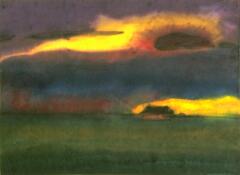
Emil Nolde
Frisian Landscape
watercolor on Asian paper
13 1/2 in. x 18 1/2 in. ( 34.3 cm x 47 cm )
Museum Purchase
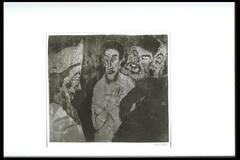
Emil Nolde
Schriftgelehrte
aquatint and drypoint on paper
17 1/2 in x 19 5/16 in (44.4 cm x 49 cm);22 1/8 in x 28 1/8 in (56.2 cm x 71.44 cm)
Museum Purchase
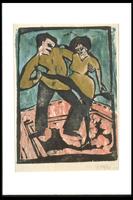
Erich Heckel
Akrobaten
woodblock print on paper
19 1/4 in x 13 7/16 in (48.89 cm x 34.13 cm);22 1/8 in x 28 1/8 in (56.2 cm x 71.44 cm);12 1/16 in x 15 7/8 in (30.64 cm x 40.32 cm);19 3/8 in x 13 9/16 in (49.21 cm x 34.45 cm)
Gift of Mathias Goeritz

Erich Heckel
Der Narr (The Fool)
woodblock on paper
14 ⅛ in x 10 11/16 in (35.88 cm x 27.15 cm);15 4/5 in x 20 1/16 in (40.16 cm x 50.96 cm);18 ½ in x 22 ⅛ in (46.99 cm x 56.2 cm)
Museum Purchase

Ernst Kirchner
Seated Woman (Gerda Schilling)
graphite on off-white satinized paper
21 x 15 1/4 in. (53.3 x 38.7 cm);28 1/8 x 22 1/8 in. (71.28 x 56.04 cm);21 x 15 1/4 in. (53.3 x 38.7 cm)
Museum Purchase
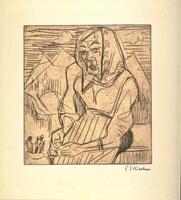
Ernst Kirchner
Seated Peasant (Sitzende Bäuerin)
etching on paper
7 ¼ in x 6 ¾ in (18.41 cm x 17.15 cm);19 3/10 in x 14 ⅜ in (49.05 cm x 36.51 cm);10 ⅝ in x 10 ⅜ in (26.99 cm x 26.35 cm)
Gift of Gilbert M. Frimet
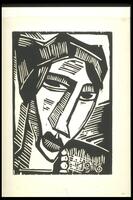
Karl Schmidt-Rottluff
Head of a Woman (Frauenkopf)
wood cut on paper
12 in x 9 in (30.48 cm x 22.86 cm);10 ⅛ in x 7 ⅛ in (25.72 cm x 18.1 cm);19 ⅜ in x 14 ⅜ in (49.21 cm x 36.51 cm);12 11/16 in x 9 ⅝ in (32.23 cm x 24.45 cm)
Museum Purchase
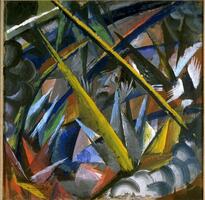
Otto Dix
Artillery Battle (Artillerieschlacht)
charcoal and gouache on paper mounted on linen
22 3/10 in x 22 ⅛ in x 1 ½ in (56.67 cm x 56.2 cm x 3.81 cm);22 3/10 in x 22 ⅛ in x 1 ½ in (56.67 cm x 56.2 cm x 3.81 cm);16 in x 15 ⅝ in (40.64 cm x 39.69 cm)
Museum Purchase
This course investigates the Nazis and the art they promoted, demeaned, and plundered (including the activities of the “Monuments Men” to rescue confiscated works). Students will investigate Nazi theories of art in relation to issues of race, gender, and nationalism, and will consider why certain art was praised and others condemned. We will study the famous art exhibition of 1937 in Munich, the “Degenerate Art exhibit,” which was organized by the Nazis to condemn modern art, including works by German Expressionists and others whose art was deemed “insane,” “perverted,” “Jewish,” and “Negro,” including works by Chagall, Kirchner, Kandinsky, Nolde, Picasso, and others. Another area of considerable interest will be the Nazi plundering of art, including Hitler’s plans to create a museum to a vanished race (Jews) at Prague, and a major art museum at Linz.












